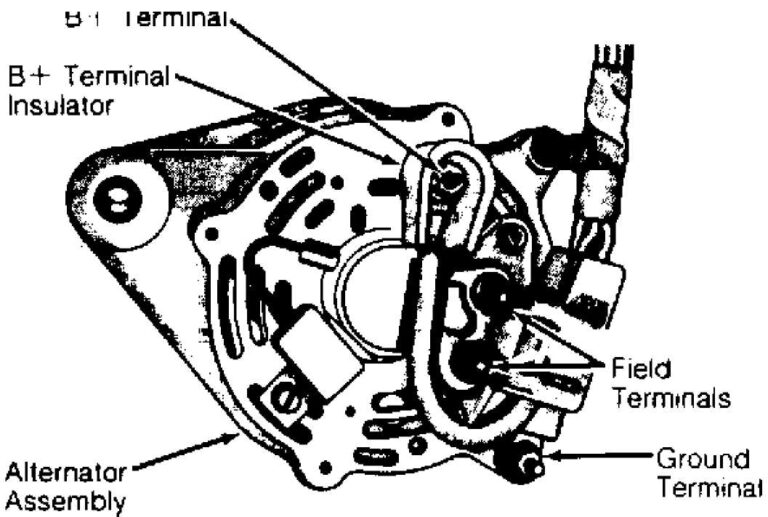2012 Jeep Grand Cherokee Cars For Sale: Your Comprehensive Guide to Finding the Perfect SUV
2012 Jeep Grand Cherokee Cars For Sale: Your Comprehensive Guide to Finding the Perfect SUV jeeps.truckstrend.com
The 2012 Jeep Grand Cherokee stands as a pivotal model in the Grand Cherokee lineage, representing the heart of the WK2 generation. Launched in 2011, this iteration brought a significant leap forward in terms of refinement, interior quality, and on-road manners, while retaining the legendary off-road capability Jeep is known for. For anyone in the market for a versatile, capable, and comfortable SUV on a budget, a used 2012 Jeep Grand Cherokee for sale presents an incredibly compelling option. It offers a blend of rugged utility, surprising luxury, and family-friendly practicality that few vehicles in its price range can match. This detailed guide will walk you through everything you need to know about purchasing a 2012 Grand Cherokee, from understanding its features to what to look for during an inspection and common ownership considerations.
Why Consider a Used 2012 Jeep Grand Cherokee?
2012 Jeep Grand Cherokee Cars For Sale: Your Comprehensive Guide to Finding the Perfect SUV
Opting for a used 2012 Jeep Grand Cherokee offers a wealth of advantages, making it a smart choice for many buyers. Firstly, the most significant benefit is value. As a vehicle from over a decade ago, it has experienced substantial depreciation, meaning you can acquire a highly capable and well-equipped SUV for a fraction of its original sticker price. This allows access to features and performance that would be out of reach in a newer vehicle of similar standing.
Secondly, the 2012 model year belongs to the robust WK2 generation (2011-2021), renowned for its balanced capabilities. It strikes an impressive equilibrium between comfortable daily driving and formidable off-road prowess. Whether you’re navigating city streets, embarking on long highway journeys, or venturing onto unpaved trails, the 2012 Grand Cherokee is engineered to handle it all with confidence. Its available Quadra-Trac and Quadra-Drive II 4×4 systems, coupled with Selec-Terrain, provide genuine all-terrain readiness.
Finally, the 2012 Grand Cherokee’s comfort and features often exceed expectations for its age. Many models come equipped with premium interiors, comfortable seating, advanced infotainment (for its time), and a suite of convenience features, making it an enjoyable vehicle for both drivers and passengers. Its spacious cabin and ample cargo capacity further enhance its practicality for families and adventurers alike.
Understanding the 2012 Grand Cherokee Trims and Features
The 2012 Jeep Grand Cherokee was available in several trim levels, each offering a distinct package of features and capabilities. Understanding these can help you pinpoint the right vehicle for your needs and budget.
- Laredo: The base trim, but far from basic. It typically comes with a 3.6L Pentastar V6 engine, 17-inch wheels, dual-zone automatic climate control, a six-speaker audio system, and a Uconnect infotainment system with a 6.5-inch touchscreen. It’s an excellent value proposition for those seeking core Grand Cherokee capabilities without excessive frills.
- Limited: Stepping up to the Limited adds more luxury and convenience. Standard features often include 18-inch wheels, leather upholstery, heated front and rear seats, a heated steering wheel, power liftgate, rearview camera, and an upgraded audio system. Many Limited models also came with the optional 5.7L Hemi V8 engine.
- Overland: The pinnacle of luxury for the standard Grand Cherokee line-up. The Overland boasts premium leather, ventilated front seats, a panoramic sunroof (CommandView), a navigation system, a premium audio system (often a 9-speaker Alpine system), and the advanced Quadra-Lift air suspension system for adjustable ride height. The 5.7L Hemi V8 was often standard or a popular option.
- SRT8: A high-performance variant designed for the street, not off-road. The SRT8 is powered by a monstrous 6.4L Hemi V8 engine, producing significantly more horsepower. It features a sport-tuned suspension, performance brakes, unique exterior styling, and a more aggressive interior. This trim is for enthusiasts prioritizing speed and handling over traditional SUV utility.

Engine Options:
- 3.6L Pentastar V6 (290 hp, 260 lb-ft torque): The most common and fuel-efficient engine. Provides ample power for daily driving and light towing.
- 5.7L Hemi V8 (360 hp, 390 lb-ft torque): Optional on Limited and Overland, standard on some. Offers significantly more power and torque, ideal for heavy towing (up to 7,400 lbs) and those who desire robust acceleration.
- 6.4L Hemi V8 (470 hp, 465 lb-ft torque): Exclusive to the SRT8, delivering exhilarating performance.
Drivetrain Options:
- 2WD (Rear-Wheel Drive): Standard on some Laredo and Limited models, offering better fuel economy but no off-road capability.
- Quadra-Trac I: Full-time 4×4 system, no low-range gearing.
- Quadra-Trac II: Full-time 4×4 with a two-speed transfer case (low-range gearing) and Selec-Terrain system.
- Quadra-Drive II: The most advanced 4×4 system, adding an electronic limited-slip differential (ELSD) at the rear for superior traction. Standard on Overland with optional V8, available on some Limiteds.
What to Look For When Buying a Used 2012 Grand Cherokee (Pre-Purchase Inspection)
A thorough inspection is paramount when buying any used vehicle, especially a 2012 Jeep Grand Cherokee. Here’s a checklist:
- Vehicle History Report: Always start with a CARFAX or AutoCheck report. Look for accident history, flood damage, salvage titles, consistent mileage readings, and service records.
- Mechanical Inspection:
- Engine: Listen for unusual noises (knocks, ticks), check for oil leaks (especially around the oil filter housing on V6 models, and the water pump). Ensure smooth idling and acceleration.
- Transmission: Shifts should be smooth and predictable. Check for delays, jerking, or slipping.
- Suspension: If equipped with Quadra-Lift air suspension, test its functionality. Cycle through all height settings. Listen for the compressor, check for uneven sag when parked overnight. Repairing air suspension can be costly. Conventional spring suspension is generally less problematic.
- Brakes: Check pad and rotor wear. Test for pulsing or pulling during braking.
- Tires: Look for even wear. Uneven wear can indicate alignment or suspension issues.
- 4×4 System: If 4×4, engage all modes (if safe to do so) and listen for unusual noises.
- Electrical Systems: Test all power windows, locks, mirrors, heated/ventilated seats, sunroof, and the infotainment system (Uconnect). Ensure all dashboard warning lights illuminate and then turn off as expected. Be aware of potential issues with the TIPM (Totally Integrated Power Module) which can cause various electrical gremlins.
- Exterior: Inspect for rust, especially on the undercarriage and around wheel wells. Look for signs of body repair, mismatched paint, or frame damage. Check headlights and taillights for hazing or cracks.
- Interior: Examine seats for rips, tears, or excessive wear. Test all buttons and controls. Check for strange odors (smoke, mold). Ensure all gauges and lights on the dashboard function correctly.
- Documentation: Request service records. A well-maintained vehicle with a documented history is always preferable.
The Buying Process: Tips for a Smooth Transaction
- Set Your Budget: Factor in not just the purchase price, but also potential immediate repairs, insurance, registration, and ongoing maintenance costs.
- Where to Buy:
- Dealerships: Often offer certified pre-owned (CPO) options with warranties, but typically at a higher price.
- Private Sellers: Can offer better deals, but require more due diligence on your part.
- Online Platforms: Good for browsing a wide selection, but always arrange in-person inspections.
- Test Drive: Take the vehicle on various road conditions – city, highway, and if possible, some rougher terrain (if 4×4). Pay attention to steering, braking, acceleration, and any unusual noises.
- Negotiation: Research market values for similar models. Be prepared to walk away if the deal isn’t right. Don’t be afraid to negotiate on price based on inspection findings.
- Financing & Insurance: Secure financing pre-approval if needed. Get insurance quotes before purchasing to understand your monthly costs.
- Post-Purchase: Consider an immediate service appointment for fluid changes and a general check-up, especially if service history is sparse.
Common Issues and Maintenance Considerations for the 2012 WK2 Grand Cherokee
While generally reliable, the 2012 Grand Cherokee, like any vehicle, has some common issues to be aware of:
- Air Suspension (Quadra-Lift): As mentioned, this system can be prone to leaks or compressor failures as it ages. Repairs can be expensive. If you don’t need the adjustable ride height, models without air suspension might offer more peace of mind.
- Water Pump Leaks (3.6L Pentastar V6): A known issue, though not universal. Keep an eye on coolant levels and temperature gauges.
- Oil Filter Housing Leaks (3.6L Pentastar V6): Another common leak point for the V6 engine. Relatively inexpensive to fix, but should be addressed.
- Totally Integrated Power Module (TIPM): Less common in 2012 than earlier WK2 models, but still a possibility. A failing TIPM can cause a wide array of electrical problems (e.g., lights not working, fuel pump issues).
- Infotainment System Glitches: The Uconnect system, while functional, can sometimes be slow or experience minor glitches. Ensure all features work.
Maintenance: Regular maintenance is key to longevity. Follow Jeep’s recommended service schedule for oil changes, fluid flushes (transmission, differential, transfer case), spark plug replacement, and tire rotations. Being proactive with maintenance can prevent minor issues from becoming major, costly repairs.
Concluding Summary
The 2012 Jeep Grand Cherokee remains an outstanding choice in the used SUV market. It offers a compelling blend of rugged capability, surprising luxury, and everyday practicality at an attractive price point. Whether you’re drawn to its legendary off-road prowess, its comfortable highway cruising, or its versatile interior, there’s a 2012 Grand Cherokee that can meet your needs.
By thoroughly researching trims, conducting a diligent pre-purchase inspection, and understanding potential maintenance considerations, you can confidently navigate the market for 2012 Jeep Grand Cherokee cars for sale. With careful selection and proper care, this generation of Grand Cherokee can provide many more years of reliable and enjoyable driving.
2012 Jeep Grand Cherokee Estimated Price Table
Prices for used vehicles vary significantly based on mileage, condition, optional features, region, and seller type (private vs. dealer). The table below provides a general estimated price range for a 2012 Jeep Grand Cherokee in good to excellent condition.
| Trim Level | Engine | Drivetrain | Typical Price Range (USD) | Key Features / Notes |
| :——— | :—– | :——— | :———————— | :———————————————————————————————————————————————————————————————————————————————————————————————————————————————————————————————————————————————————————————————————————————————————————————————————————————————————————————————————————————————————————————————————————————————————————————————————————————————————————————————————————————————————————————————————————————————————————————————————————————————————————————————————————————————————————————————————————————————————————————————————————————————————————————————————————————————————————————————————————————————————————————————————————————————————————————————————————————————————————————————————————————————————————————————————————————————————————————————————————————————————————————————————————————————————————————————————————————————————————————————————————————————————————————————————————————————————————————————————————————————————————————————————————————————————————————————————————————————————————————————————————————————————————————————————————————————————————————————————————————————————————————————————————————————————————————————————————————————————————————————————————————————————————————————————————————————————————————————————————————————————————————————————————————————————————————————————————————————————————————————————————————————————————————————————————————————————————————————————————————————————————————————————————————————————————————————————————————————————————————————————————————————————————————————————————————————————————————————————————————————————————————————————————————————————————————————————————————————————————————————————————————————————————————————————————————————————————————————————————————————————————————————————————————————————————————————————————————————————————————————————————————————————————————————————————————————————————————————————————————————————————————————————————————————————————————————————————————————————————————————————————————————————————————————————————————————————————————————————————————————————————————————————————————————————————————————————————————————————————————————————————————————————————————————————————————————————————————————————————————————————————————————————————————————————————————————————————————————————————————————————————————————————————————————————————————————————————————————————————————————————————————————————————————————————————————————————————————————————————————————————————————————————————————————————————————————————————————————————————————————————————————————————————————————————————————————————————————————————————————————————————————————————————————————————————————————————————————————————————————————————————————————————————————————————————————————————————————————————————————————————————————————————————————————————————————————————————————————————————————————————————————————————————————————————————————————————————————————————————————————————————————————————————————————————————————————————————————————————————————————————————————————————————————————————————————————————————————————————————————————————————————————————————————————————————————————————————————————————————————————————————————————————————————————————————————————————————————————————————————————————————————————————————————————————————————————————————————————————————————————————————————————————————————————————————————————————————————————————————————————————————————————————————————————————————————————————————————————————————————————————————————————————————————————————————————————————————————————————————————————————————————————————————————————————————————————————————————————————————————————————————————————————————————————————————————————————————————————————————————————————————————————————————————————————————————————————————————————————————————————————————————————————————————————————————————————————————————————————————————————————————————————————————————————————————————————————————————————————————————————————————————————————————————————————————————————————————————————————————————————————————————————————————————————————————————————————————————————————————————————————————————————————————————————————————————————————————————————————————————————————————————————————————————————————————————————————————————————————————————————————————————————————————————————————————————————————————————————————————————————————————————————————————————————————————————————————————————————————————————————————————————————————————————————————————————————————————————————————————————————————————————————————————————————————————————————————————————————————————————————————————————————————————————————————————————————————————————————————————————————————————————————————————————————————————————————————————————————————————————————————————————————————————————————————————————————————————————————————————————————————————————————————————————————————————————————————————————————————————————————————————————————————————————————————————————————————————————————————————————————————————————————————————————————————————————————————————————————————————————————————————————————————————————————————————————————————————————————————————————————————————————————————————————————————————————————————————————————————————————————————————————————————————————————————————————————————————————————————————————————————————————————————————————————————————————————————————————————————————————————————————————————————————————————————————————————————————————————————————————————————————————————————————————————————————————————————————————————————————————————————————————————————————————————————————————————————————————————————————————————————————————————————————————————————————————————————————————————————————————————————————————————————————————————————————————————————————————————————————————————————————————————————————————————————————————————————————————————————————————————————————————————————————————————————————————————————————————————————————————————————————————————————————————————————————————————————————————————————————————————————————————————————————————————————————————————————————————————————————————————————————————————————————————————————————————————————————————————————————————————————————————————————————————————————————————————————————————————————————————————————————————————————————————————————————————————————————————————————————————————————————————————————————————————————————————————————————————————————————————————————————————————————————————————————————————————————————————————————————————————————————————————————————————————————————————————————————————————————————————————————————————————————————————————————————————————————————————————————————————————————————————————————————————————————————————————————————————————————————————————————————————————————————————————————————————————————————————————————————————————————————————————————————————————————————————————————————————————————————————————————————————————————————————————————————————————————————————————————————————————————————————————————————————————————————————————————————————————————————————————————————————————————————————————————————————————————————————————————————————————————————————————————————————————————————————————————————————————————————————————————————————————————————————————————————————————————————————————————————————————————————————————————————————————————————————————————————————————————————————————————————————————————————————————————————————————————————————————————————————————————————————————————————————————————————————————————————————————————————————————————————————————————————————————————————————————————————————————————————————————————————————————————————————————————————————————————————————————————————————————————————————————————————————————————————————————————————————————————————————————————————————————————————————————————————————————————————————————————————————————————————————————————————————————————————————————————————————————————————————————————————————————————————————————————————————————————————————————————————————————————————————————————————————————————————————————————————————————————————————————————————————————————————————————————————————————————————————————————————————————————————————————————————————————————————————————————————————————————————————————————————————————————————————————————————————————————————————————————————————————————————————————— and
- "My First Steps" Story: A personal narrative illustrating the initial challenges and triumphs of learning to walk, perhaps mentioning the feeling of clumsiness turning into triumph.
- "The Great Race" Story: An imaginative narrative where various characters (perhaps animals or fantastical creatures) compete in a walking race, highlighting perseverance and the simple joy of movement.
- "The Lost Toy" Story: A simple plot where a child loses a favorite toy and has to walk to various places to find it, emphasizing exploration and problem-solving through movement.
- "The Magical Path" Story: A fantasy story where walking on a specific path leads to wonderful discoveries or transformations, adding an element of wonder and adventure.
Target Audience: Children aged 3-6 (preschool/early elementary).
Key Themes: Perseverance, exploration, joy of movement, independence, problem-solving, wonder.
Constraints:
- Each story should be around 150-200 words.
- Simple language, repetition, and engaging elements suitable for the target audience.
- Clearly distinguishable stories.
I will structure the output with a clear title for each story.
Let’s begin!
Story 1: My First Steps
Little Leo wiggled his toes. He wanted to reach the sunny window, but his legs felt like jelly! Mommy held his hands. Wobble, wobble. One step, two steps. "Oops!" Leo plopped down, giggling. It was hard!
He watched his big sister run and jump. Leo wanted to run too! He tried again. Mommy smiled. He held onto the sofa. Slide, slide. He took one tiny step, then another. His legs shook like leaves in the wind.
"You can do it, Leo!" whispered Daddy. Leo pushed his little feet. He let go of the sofa for just a second. Plop! Down he went again. But this time, he wasn’t sad. He felt a tingle in his toes. He stood up, bravely. One step. Two steps! He was walking! Not perfectly, but he was moving all by himself. He giggled all the way to the window. "Yay, Leo!" cheered his family. He felt like the strongest, bravest boy in the world.
Story 2: The Great Race
The sun shone bright over Whispering Woods. It was time for the Annual Walking Race! First, there was Speedy Squirrel, wiggling his nose. Then, Bouncy Bunny, twitching his ears. And slow, steady Shelly Snail, peeking out of her shell. "Ready, set, WALK!" shouted Ol’ Owl.
Speedy Squirrel zipped ahead! "Too fast, too fast!" he chattered, tripping over a root. Bouncy Bunny hopped along, hop-hop-hop, but soon got tired. Shelly Snail moved veeeery slowly, but she never stopped.
The path twisted and turned. Speedy Squirrel rested. Bouncy Bunny munched on clover. But Shelly Snail kept going, inch by tiny inch. "Almost there!" hooted Ol’ Owl. Shelly Snail crossed the finish line last, but she was smiling. "I did it!" she whispered. Everyone cheered. It wasn’t about being fast; it was about never giving up and enjoying every step.
Story 3: The Lost Toy
Lily loved her fuzzy blue teddy bear, Button. One morning, Button was gone! "Oh no!" cried Lily. She looked under her bed. No Button. She looked in her toy box. No Button. "I must find him!" she decided.
Lily walked to the kitchen. Her little feet went tap, tap, tap. She peeked under the table. No Button. She walked to the living room. Her steps were soft, soft, soft on the rug. She looked behind the big chair. Still no Button.
Then, Lily remembered! She had been playing outside yesterday. She walked to the garden door. Her steps were quick, quick, quick with excitement. There, nestled under the rose bush, was fuzzy blue Button! "Found you!" Lily hugged him tight. Walking helped her explore every corner of her house and garden, and it helped her find her lost friend. What an adventure!
Story 4: The Magical Path
Leo loved to walk the path behind his house. It wasn’t just any path; it was the Magical Path! Every time Leo stepped onto it, something wonderful happened.
One sunny morning, Leo walked along. Crunch, crunch went the leaves under his feet. Suddenly, the path sparkled! The trees beside him shimmered, and a tiny, friendly sprite with glittery wings flew out from behind a flower. "Hello, Leo!" chirped the sprite, dancing around his head. Leo giggled.
He walked further, past the whispering willow tree. Swish, swish went the branches. This time, the path turned soft and bouncy, like walking on clouds! Leo felt so light, he almost floated. He saw a rainbow bird singing a beautiful song just for him. Every step on the Magical Path was a new adventure, full of wonder and joy. Leo knew that as long as he kept walking, the magic would always be there, waiting for him.



